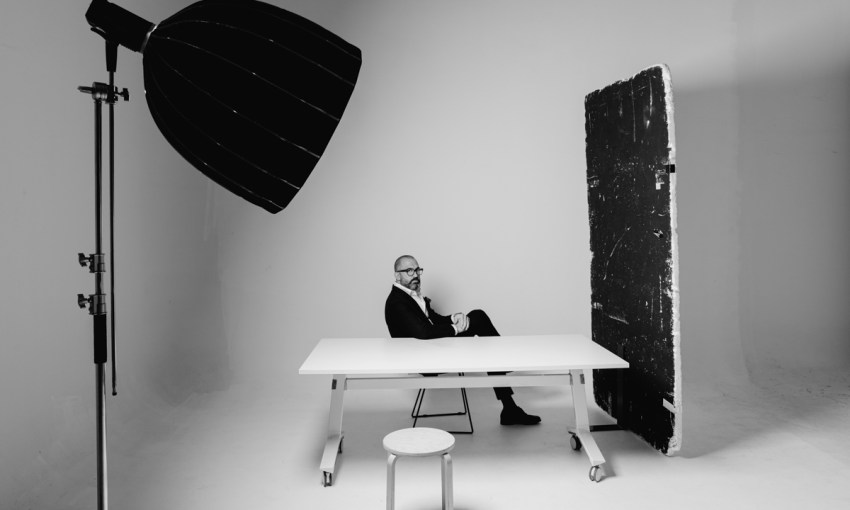Michel Boutin comes from a dynastic fashion family and he's brought a label back from the brink before. His new job is reinstating Australian Fashion Group as a beacon of the South Australian fashion industry.
A new future for Australian Fashion Group is coming
Most mornings, Michel Boutin wakes up at his home in Henley Beach and takes his dog for a walk, heading onto the sand via an access point midway between the Grange and Henley jetties. Some days he’ll head north, other days he’ll head south. When he has time, he’ll do both, walking jetty to jetty before heading home.
Michel has lived in Henley Beach since January, a “sea change” from Melbourne, he says, which he made with his wife, following his appointment a few months earlier as global CEO of Australian Fashion Group.
This is the company that sprung from the rubble of Australian Fashion Labels, which went into voluntary administration in January 2021, only to be bought by a consortium of private investors, including South Australia’s chief entrepreneur, Andrew Nunn, a couple of months later.
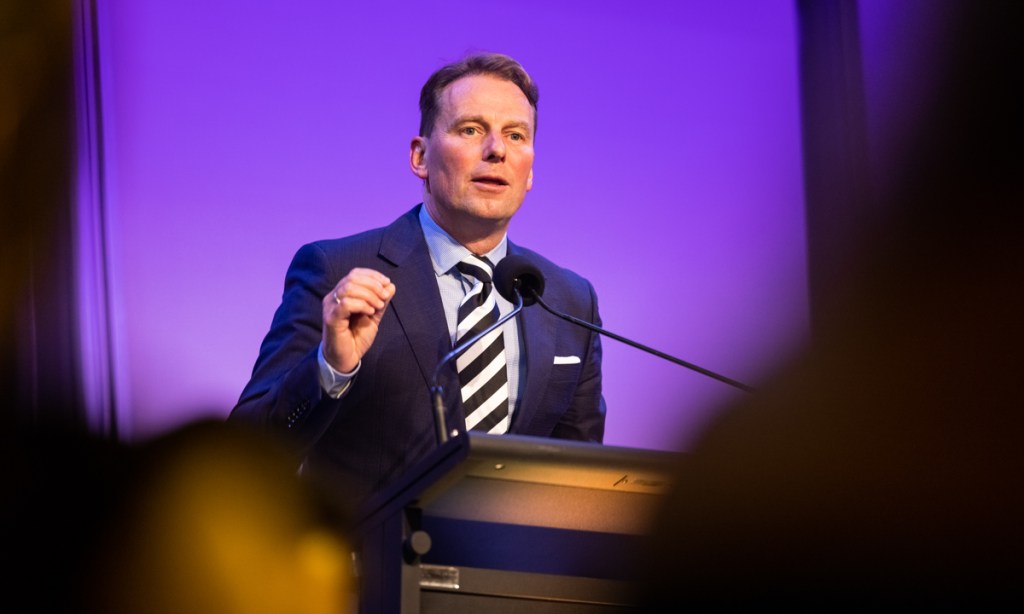
South Australia’s chief entrepreneur Andrew Nunn at this year’s 40 Under 40. This picture: Frankie the Creative
The new ownership group pitched Michel the job twice. He was director of strategy and operations with The Bespoke Corner Tailors, in Melbourne, and happily engaged in the work when the first call came. The second time, though, Michel was primed for any opportunity to leave his city.
“Melbourne was in lockdown off and on for two years, and when you’re in a business that’s not retail, because [The Bespoke Corner Tailors is] a service business, and you can’t service, you just sit on your hands,” Michel says.
“I’m not the type of guy who sits home and watches 10 hours of TV, I need to do something, and the last lockdown really sort of broke my back. That was it. And perfect timing, Australian Fashion Group called me again. I said, ‘Send me a contract, I’m going’.”
The fashion family
Michel was raised in Montreal, Canada, the son of the late Bob Boutin, a respected retail man whose career started at The Bay, a major Canadian fashion retailer. Bob moved to Australia in the ’90s, where he worked with Angus & Coote, Gucci and Myer. Michel’s mum, Micheline Boutin, had roles within Chanel and Georg Jensen.
Michel’s parents’ careers had an effect on how he sees the world. When he visits a retail store – whether a company under his purview or not – he walks through with eyes wide, as he saw his dad do, looking for ways to improve customer experience. Muscle memory has his hands reach out to the hangers on the racks, spacing them three fingers’ width apart, like his mum taught him. “I still walk into a shop – even David Jones, I find myself moving stuff. It’s just in me,” he says.
His sister followed the family line, working for Procter & Gamble, Estee Lauder, LVMH, and, currently, multinational beauty company Coty. But for a long time, Michel resisted the fashion industry.

Michel Boutin
After an early stint as a full-time athlete, competing at an international level as an alpine skier, Michel retired and went on to do post-grad studies, adding a master of international relations to his bachelor of business. The family Boutin was in Australia by this point, so he chose to study at University of New South Wales. (Another contributing factor: his first pick, Georgetown University, in Washington DC, “was about $100,000 US a semester”.) The plan was to do international relations with a view to joining ASIO, but the agency’s eligibility requirements changed, stipulating citizenship, which scuttled those plans.
While studying, Michel worked for Ford as a commercial finance lender, which kickstarted a career working in similar positions for several auto companies. He worked with the likes of Land Rover, Jaguar, Aston Martin, Volkswagen, Audi, Lamborghini, Bentley, and Porsche.
Being in the lending department was not Michel’s long-term plan, but he enjoyed working with globally renowned brands. “[I was] around brands my whole childhood, from cosmetics to clothing to fragrances, through my immediate family, and then my extended family as well,” he says. A brand bible he was given while working for an auto company had a footnote, communicating a simple directive to designers: no Ferrari red. “Things like that that stick in your mind on brand, and the importance of brand, and storytelling,” he says.
The call to transition into the Boutin line of work came in 2008, when his dad, who was retired but still had some freelance fashion clients, tapped him on the shoulder. “He had one [client] he was struggling with, and it was a franchise group, and it was a bridalwear business,” Michel says. This was a baptism of fire.
New here? Sign up to receive the latest happenings from around our city, sent every Thursday afternoon.
“If you’re studying fashion or you’re thinking of doing a fashion degree, go work for a bridalwear company,” he says. “First of all, the emotional attachment of buying a bridal dress, or suits for men or whatever, is so high. Just to deal with that is an amazing training experience. But also, the intricacies of actually building those products is far superior to anything else you’ll every experience with any brand. So that was fun.”
Michel eventually became COO and CMO of that company, and his view shifted from a business focus to also having an eye on the creative side.
“I got pulled into a meeting on menswear, range planning, and then started asking questions and just trying to remember everything I saw growing up as a kid,” he says.
“I had my dad involved in a few things, and then he got sick and literally passed away like that. And here I am on this project that got bigger and bigger and bigger, and ended up being there full-time five years, which is a long stint for me.”
This passage into fashion has, so far, been permanent. And Michel’s recruitment into Australian Fashion Group is not the first time his understanding of brand and business has won him the opportunity to revive a troubled fashion company.
The first crisis
Michel started working with the Australian subsidiary of van Laack, a German apparel company, in 2015, working in brand and commercial director roles. Through van Laack, Michel had purview over Boston Brothers, Baubridge & Kay, Herringbone and Rhodes & Beckett.
In early February 2017, administrators were called into Rhodes & Beckett and Herringbone, with owner van Laack citing underperforming stores. A dispute between van Laack and Nelson Mair, the founder of Rhodes & Beckett and then-director of that brand and Herringbone, over the true cause of its downfall played out in the media.
On the day the administrators were called in, Michel received a frantic phone call from someone within the company. “‘Everything’s exploded. We have security guards in the place. The MDs getting escorted out. The Germans are in town’,” Michel recalls being told. The next day, he was invited into the office again for what he describes as “almost not an interview. It was, ‘What can you do to help out?’”
As part of the administration team, Michel facilitated the sale of Rhodes & Beckett to Black Bear Holdings, backed by private equity firm AO Capital, while van Laack retained ownership of the Herringbone IP. He became managing director of Rhodes & Beckett in July 2017 and stayed until November 2018.
“I loved the product, which is something that I always say not to,” Michel says. “Never fall in love with it, never convince yourself that it’s you. But you’re talking about men’s suiting – that’s my DNA. I love that product. So I stuck around.”
View this post on Instagram
Michel’s understanding of why he was considered the right person to revive Rhodes & Beckett is plain: “I was still there”. But it helped that he has a predilection for chaotic working conditions.
“The drama was fun. It is fun. I love the chaos, and I love finding solutions,” he says. “My drive is to find different ways of doing something that you did yesterday, and this was a classic case.
“You had a business that was in trouble because of the history, you had an owner that was still very much involved, even though the business got put into administration, and you had the administrators who just wanted their ticket and get out. It was interesting to me.”
A new challenge
The case of Australian Fashion Group is a different affair.
Founded in 2007 by Melanie and Dean Flintoft, Australian Fashion Labels (AFL) consisted of five brands at the time of its demise in 2021: Finders Keepers; C/MEO Collective; Keepsake; The Fifth; and BNKR. It had also extended its reach beyond South Australia to Melbourne; Shanghai, China; and Los Angeles, United States.
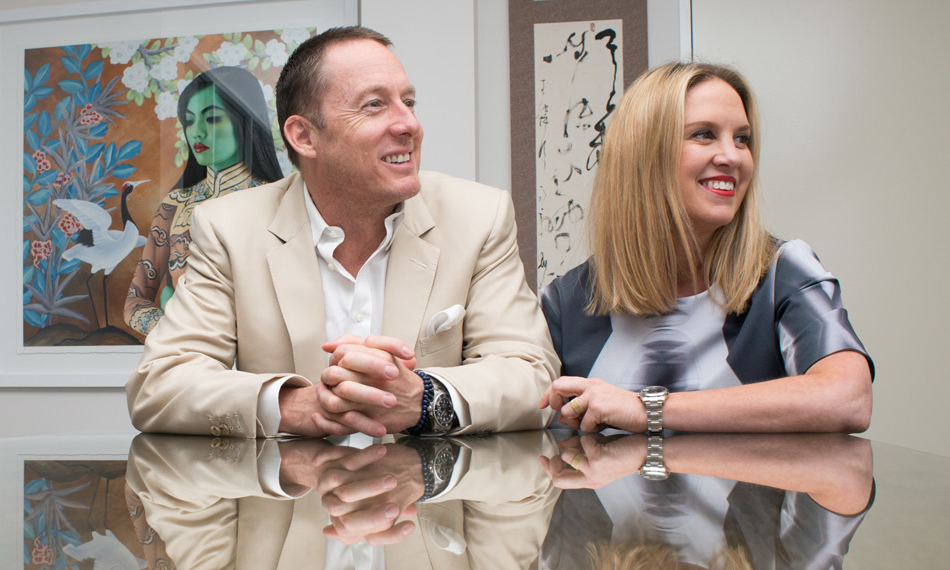
Dean and Melanie Flintoft. This image: Nat Rogers
According to The Advertiser, the company had 20 employees in 2013, which had grown to 130 in 2015, the year in which it received a $19 million loan from Bendigo and Adelaide Bank, including $3.5 million provided by the State Government as part of a pilot partial-guarantee loan scheme. (It was the first and last recipient.)
In February 2019, AFL closed its BNKR store, on the corner of Rundle Mall and Pulteney Street. This decision was made as part of a company restructure due to “changing consumer behaviour and increased costs”, co-founder Dean Flintoft told The Advertiser. This resulted in the loss of 15 employees. Dean also told the paper he expected Aus Fashion Labels’ annual turnover to decrease from $52 million to $50 million in that financial year because of the closure.
Though Dean remained publicly chipper, at the time of that interview Australian Fashion Labels had not made a profit in three years. According to reporting by The Australian, the company made a $1.86 million profit in the 2014–15 financial year, but made a combined loss of $9 million from 2015–19.
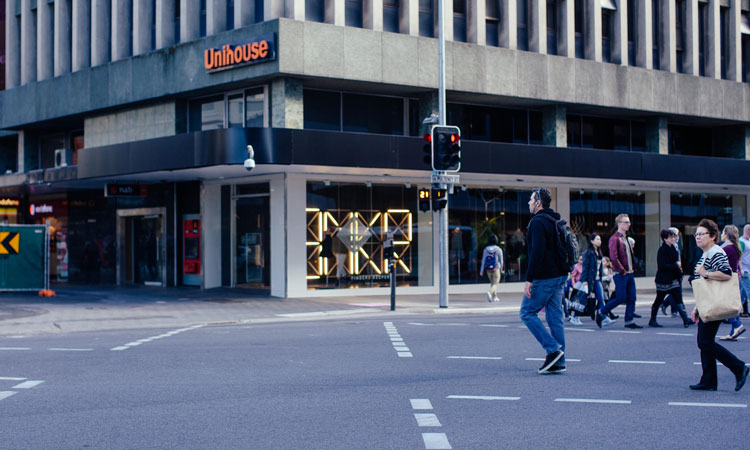
BNKR before it was Chemist Warehouse
Administrators Duff & Phelps were brought in on 6 January 2021, with Marcus Ayres, of Duff & Phelps, telling SmartCompany Australian Fashion Labels’ failure was the result of “the legacy of those restructuring costs, plus the impact of COVID-19 on sales [becoming] an increasing hang on the business”.
In purchasing the business in March 2021 with a consortium of local investors, Andrew Nunn told The Advertiser he hoped that reviving the company would mean fashion industry skills would be retained in the state. Sean Ebert, director of Venture Corporate Advisory, was made interim CEO, until Michel was brought in, in September, as global CEO.
The task ahead
The story of Australian Fashion Group (AFG) now spans 15 years. There are both positives and negatives associated with this legacy, which Michel has discovered while re-engaging with the United States.
“We attended our first show, and literally every client that came was, ‘Yeah, I bought a few seasons ago. I’m ready’. We didn’t even need to sell, they were ready to go,” he says. “Double-edged sword on that is we had an equal amount of people come to us and say, ‘Don’t want to hear from you. You screwed me. You still owe me’. It’d be nice not to have that other one, but again, that’s part of the chaos.”
Whatever the nature of the AFG legacy, Michel considers the business he inherited to be at the startup stage. Though all five brands under its banner will remain, he says they were under-developed, even at their peak.
“Adelaideans saw the business as BUNKR. They saw it as a retail store that had products. And to this day, I’m sure I can go around the room here and introduce myself and tell people what I do, and they’ll go, ‘Oh, yeah, I had a BUNKR dress’,” he says.
“There is no such thing as a BUNKR dress. It’s a C/MEO dress, or a Keepsake dress, or The Fifth Label dress, or any of the brands we have.
“BUNKR was just the sign on the door, yet people saw that as ‘the brand’. To me, as a brand person, that’s a huge issue. That’s a complete miss.”

A Keepsake release from 2014
He says this was less a problem in international markets, but he is working with the designers at each label to solidify the brands. He has also reduced the churn on designers, sticking to a two-season release schedule, aligned to the Northern Hemisphere. Previously, “they were doing like 18,” Michel says, “because they were doing northern and southern hemisphere collections”.
AFG came with a significant customer database, and Michel’s plan is to also re-engage that market, at the same time as building the brands’ presence through wholesaling to retail stores. This will happen in Australia and the US first, and Europe and China later on. The company will also rebuild its own direct retail streams, strictly online, which includes BNKR.
“BUNKR will still remain as a marketplace [for] uniquely Australian brands, and we’ll encourage other brands to be on there,” Michel says. “That’s part of that, too, is to encourage, hopefully, South Australian brands, but [also] Australian brands that are either emerging or want a global audience, that we have.”
The foothold AFG has in its international markets is a major advantage for the company, and one Michel is thankful for. “Thankful that the previous owners had spent that much money on the price of entry,” he laughs. “It’s as simple as that. Which is a weird concept, thanking the guys that destroyed the business, but… I would thank them for all the hard work that they did do in those markets, because we’re benefitting from it.”
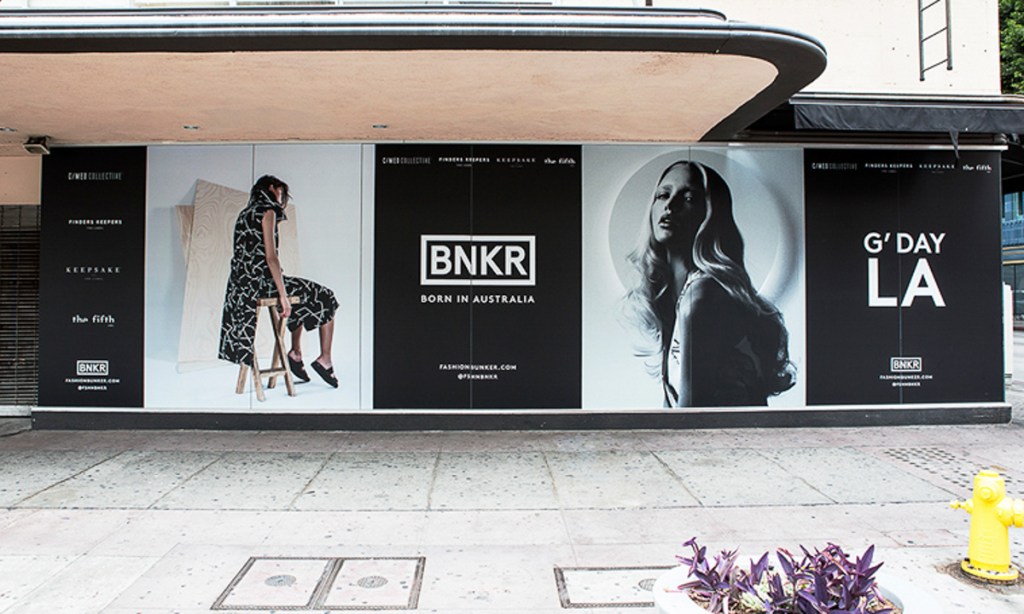
Australian Fashion Labels opened a flagship store in Los Angeles in 2016
A new legacy
The Australian Fashion Group revival is still a work in progress, but that hasn’t stopped Michel getting started on the broader industry aims stated by Andrew Nunn, to keep fashion skills in SA. If the consortium’s vision is realised, the company will be the heart of the South Australian fashion industry, and a proving ground for young designers.
“My mindset is, I’ve seen TAFE, I’ve seen Flinders, I know the product that they’re pushing out. I also know the legacy that I’m running, I also know the history of having all these students come in and out of our business – why wouldn’t you solidify a program where we become the testing ground?” Michel says.
“I’ve had a meeting with a few government agencies, and TAFE, and unreservedly put that on the table: ‘You set up the program, make it part of your curriculum’.
“They’ll get the experience. How they’re set up, how the credentials work, I don’t know. I’m not an educator, I’m just a merchant, you know? But why not? If we have the structure, we have the organisation, we have the legacy, why not?”
This is all predicated on the success of Australian Fashion Group, which, obviously, is yet to be proven.
Michel righted the capsized Rhodes & Beckett ship, which continues to float today. It seems a fair assumption that he was called to perform a similar action on the waterlogged AFG (to overextend the metaphor).
CityMag wonders aloud if being the guy who gets the call in these kinds of situations might not give you some kind of complex. Michel cringes – deeply – at the suggestion. “Don’t put that in there,” he winces. If what we posited was true, that he is seen as some kind of business saviour, “I’d be a lot better off financially and I’d probably be sticking around with the company.”
But he’s confident in his skills, as “the guy that loves chaos”, who loves “finding a solution”, and who can “take the hit and keep going”.
The task before him is enormous in scope, but it’s completed in small movements. And his decision to stay is made daily. Each waking morning, the possibility of a new direction.

“You just get it to where you have to get it, and then decide whether or not you can get it to the next point, and move on. It’s as simple as that,” he says.
“Now, that could be six months, it could be 10 years. It doesn’t matter. There is a point where you wake up in the morning and say, ‘Can I contribute to this? Yep. Alright, let’s go’.
“Right now, we’re uniquely focussed on wholesale and design, because we need to do that right to have a future. Retail will come. And we’ve engaged people to come in now and run that. And I’m arm’s length on that, because I know they’ve got the skillset, and they’re running it. It’ll take time.
“If there’s one thing I’d love to achieve in this business, is one: set the business right, make it profitable, make a viable option for this business to continue, that’s priority one. Priority two: if I can influence the greater industry here, I’d love to. I’d love to. That would be a great legacy, to say that I did that.
“But it is a cool feeling. It’s fun running a business where you’ve got that passion of local, you know? Yet I’m selling an international product. It’s fun. It’s very unique.”



